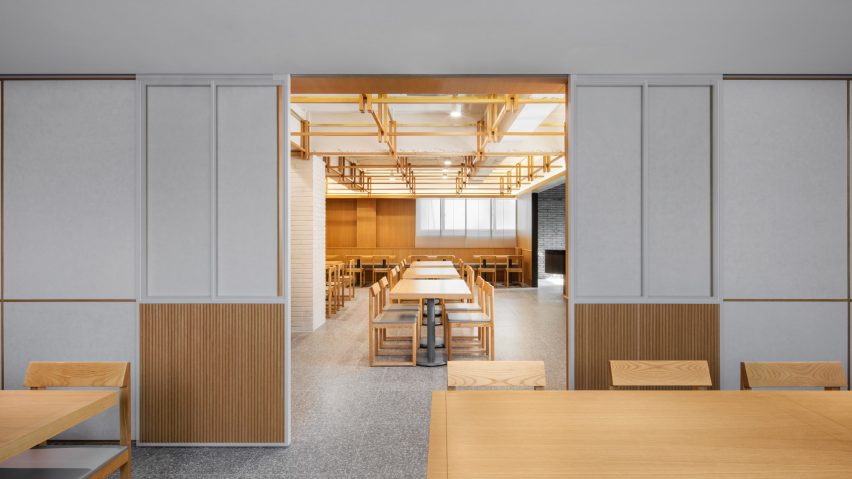
Seoul restaurant panelled with wood in ode to former owner's love of oak trees
Korean firms By Seog Be Seog and MMOA Studio made oak the focus of their interiors for 70-year-old Seoul restaurant Chosunoak's second location.
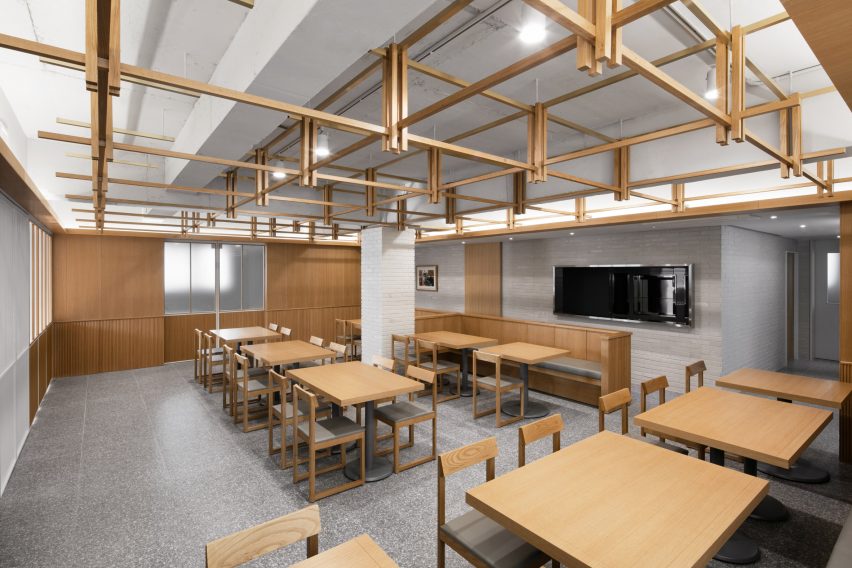
The restaurant has been owned by the same family since it opened in 1947, and is now run by a third generation.
The late former owner expressed a love of oak trees, which the current operator asked the studios to incorporate into the interiors. This is also reflected in the new restaurant's name – Chosunoak the Oak.
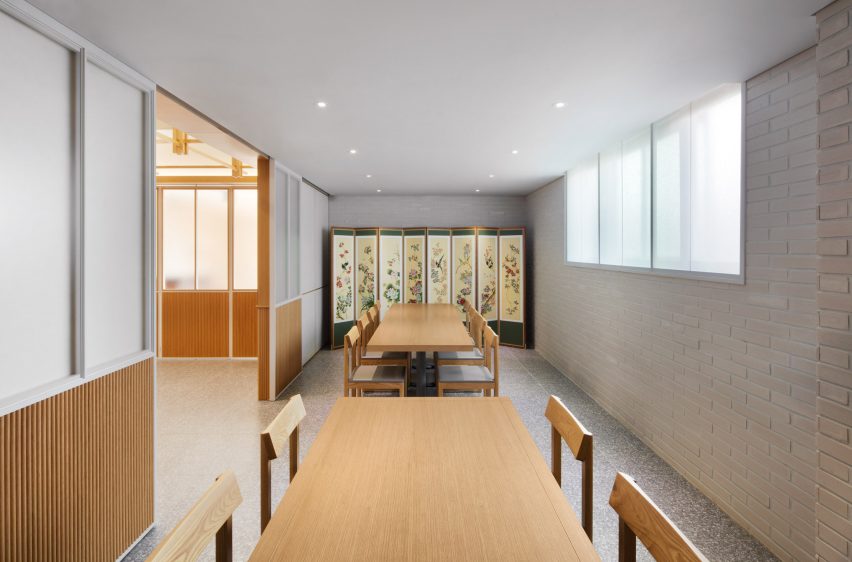
The 206-square-metre space is located on the second floor of the same building the original restaurant inhabits, and has been designed to encourage regular and new customers of all different ages to dine together in harmony.
It contrasts minimal angular oak chairs, tables and benches with grey brick walls and a mottled grey floor, while splashes of colour are introduced in the form of traditional screens and engravings.
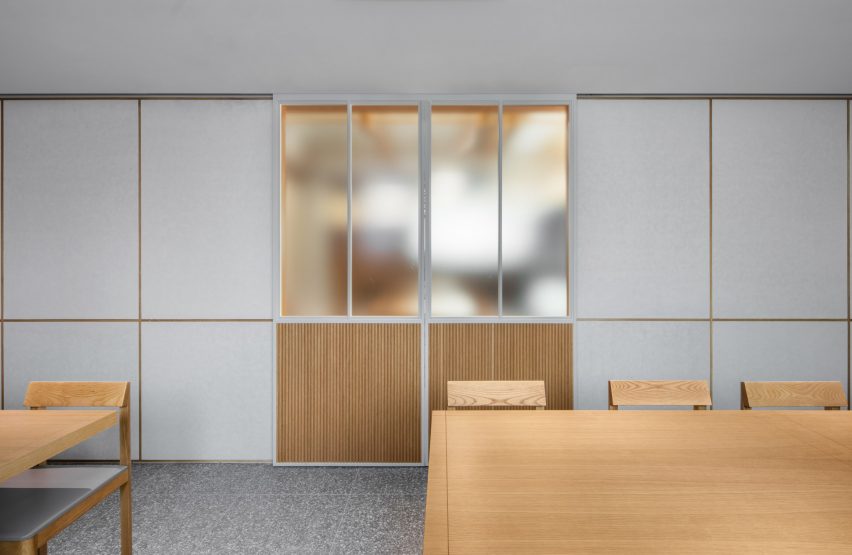
The wood theme is continued in ridge-patterned panelling, and sliding doors with clouded glass that create more private dining areas for larger parties. Sections of oak have been placed together to from a gridded covering for the ceiling, which also includes brass details.
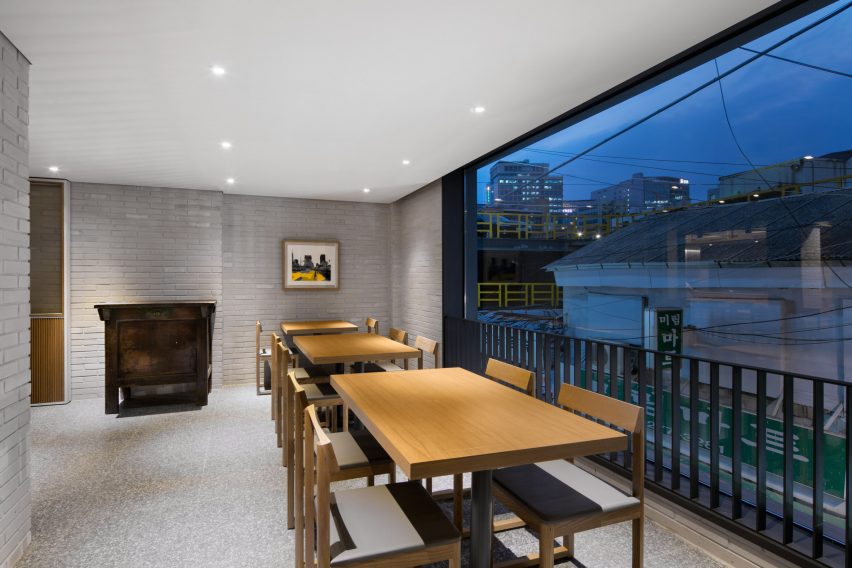
Lighting sits on brass stems, with circular wooden shades, and oak strips continue into the toilets, which feature rounded rectangular mirrors and the same grey colour scheme. The studios kept lighting to a minimum, choosing instead to rely, wherever possible, on natural lighting from the restaurant's windows.
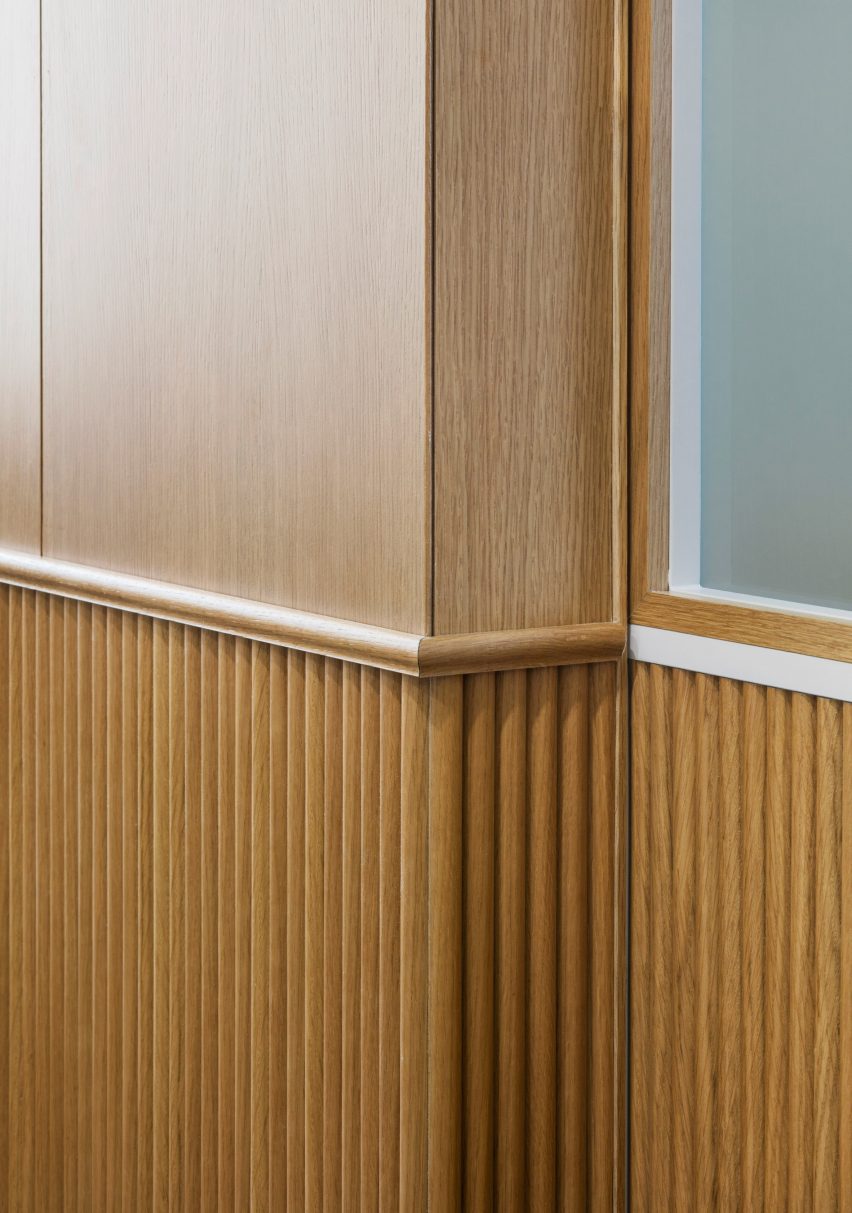
"I wanted to contain time, people and oak trees in the space, and we ultimately wanted to contain the thought that this is a space where people meet and enjoy culture," said By Seog Be Seog founder Seog Junwoong.
"I tried to make a space where people can fully feel the meaning of eating and enjoy it together," he added. "I hope Chosunoak the Oak will become such a space for many generations."
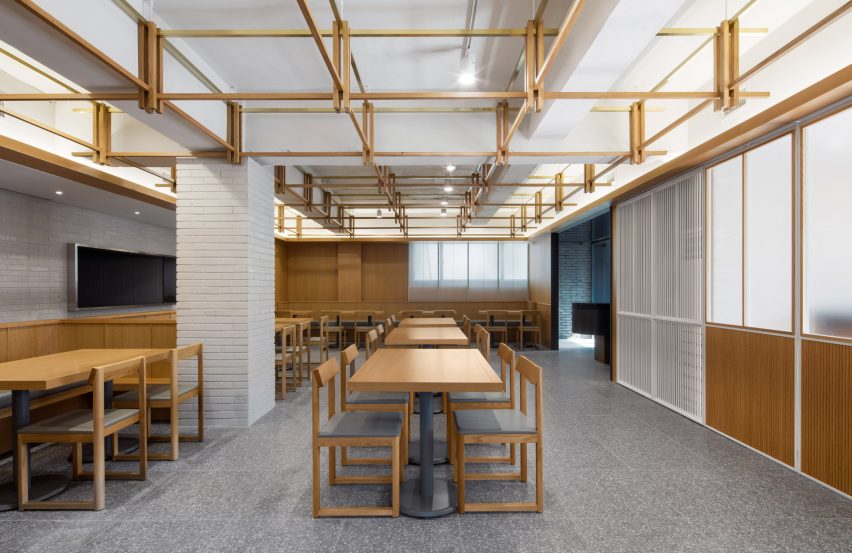
Junwoong set up his studio in 2013. He has completed several projects in Seoul, including a super-minimal medical clinic.
Other recently completed restaurant interiors include a Tel Aviv bistro with brightly coloured panels based on traditional Japanese kites, and a Melbourne eatery that borrowed the "evocative earthiness" of Middle Eastern architecture.
Photography is by Yong Joon Choi.